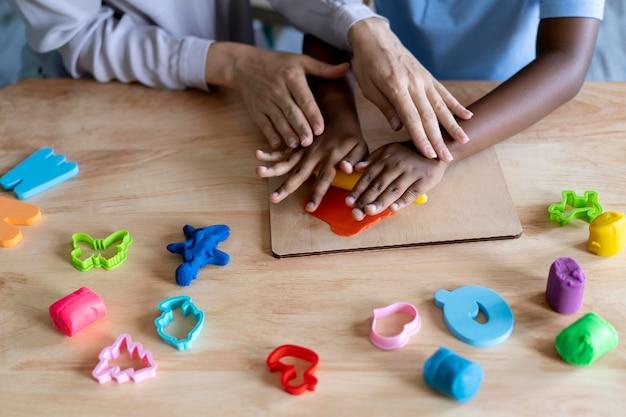As parents, caregivers, and educators, we all want the best for the children in our lives. We strive to provide them with the tools they need to succeed in every aspect of life, including learning. But have you ever wondered how gross motor development plays a role in their ability to learn?
Gross motor skills refer to the coordinated movements of large muscle groups, which involve activities like crawling, walking, jumping, and balancing. These skills are crucial for a child’s physical development, but they also have a significant impact on their cognitive and academic growth.
In this blog post, we will explore the relationship between gross motor development and learning. We will discuss the importance of motor skills in a child’s educational journey, the milestones they should reach by the age of four, and how motor skill difficulties can affect learning. So let’s dive in and discover how helping your child improve their gross motor skills can set the foundation for a successful learning experience!

How does gross motor development affect learning?
When it comes to the connection between gross motor development and learning, the relationship is more intertwined than you might expect. Let’s delve into the fascinating world of gross motor skills and discover how they can impact a child’s ability to grasp new concepts and excel in academic settings.
The Foundation of Coordination
Gross motor skills, which involve the movement of large muscle groups, play a crucial role in laying the foundation for coordination. From crawling and walking to running and jumping, these activities help children develop balance, strength, and spatial awareness. When kids engage in physical play, such as hopping or skipping, they are actually fine-tuning their motor skills in preparation for more complex cognitive tasks.
Boosting Brain Function
Believe it or not, engaging in physical activities that challenge gross motor skills can actually enhance brain function. When children move their bodies, their brains light up with activity, leading to the release of neurochemicals that promote learning. Research has shown that regular participation in physical exercises stimulates the growth of new brain cells and improves cognitive functions like memory and attention span.
A Full-Body Workout for Learning
If you think of the brain as the command center, then gross motor skills acts as the fuel that keeps it running smoothly. By providing a full-body workout, gross motor activities increase blood flow to the brain, delivering oxygen and essential nutrients to support optimal cognitive function. This improved circulation enhances concentration and information retention, making it easier for children to absorb and apply what they learn.
Setting the Stage for Social Interaction
Another remarkable aspect of gross motor development is its role in fostering social interaction and communication skills. Participating in group physical activities, such as team sports or playground games, exposes children to interactive environments where they learn to collaborate, negotiate, and communicate effectively with their peers. These social skills are not only essential for everyday life but also directly enhance their ability to learn in academic settings.
The Link with Emotional Well-being
In addition to their physical and cognitive benefits, gross motor activities also have a positive impact on a child’s emotional well-being. Engaging in physical play and conquering new physical challenges can boost self-esteem, build resilience, and reduce stress and anxiety. This improved emotional state paves the way for a more conducive learning environment, where children are more receptive to new information and more inclined to take on academic challenges with confidence.
Embracing the Power of Play
Now that we understand how gross motor development affects learning, it’s clear that play is an essential ingredient in a child’s educational journey. Encouraging children to engage in physical activities not only promotes healthy growth and development but also creates a solid foundation for optimal learning outcomes. So let’s celebrate the joy of movement, embrace the power of play, and give our kids the opportunity to thrive both physically and academically!
Remember, when it comes to learning, the path to success is just a hop, skip, and a jump away!

FAQs: How Does Gross Motor Development Affect Learning?
How does gross motor development affect learning
Gross motor development plays a crucial role in a child’s overall learning journey. When children engage in activities that involve large muscle movements, such as crawling, walking, or skipping, it stimulates brain development, promotes cognitive skills, and enhances their ability to learn effectively.
What gross motor skills should a 4-year-old have
At the age of 4, children should have developed various gross motor skills. They should be able to run, jump, hop on one foot, balance for a few seconds, throw a ball with accuracy, and catch a ball using both hands. Don’t worry if they still fall or stumble occasionally; it’s all part of the learning process!
Why is motor skill important in learning
Motor skills are essential for a child’s learning because they establish a strong foundation for their physical and cognitive development. As children engage in activities like climbing, swinging, or riding a bike, they are not just having fun – they are also improving their coordination, concentration, problem-solving abilities, and overall school readiness.
At what age do gross motor skills develop
Gross motor skills begin to develop from birth and continue throughout childhood. The timeline may differ for each child, but most infants start rolling over between 4 to 7 months, sit without support by 6 to 8 months, crawl at around 9 to 12 months, and take their first steps between 12 to 18 months. However, every child learns at their own pace, so don’t rush the process!
What are some examples of gross motor skills
Gross motor skills involve movements of the large muscles in the body. Running, jumping, skipping, climbing, hopping, throwing, catching, and balancing are some examples of gross motor skills. Essentially, these skills require coordination, strength, and control of the arms, legs, and torso.
Is a 4-year-old still a baby
No, a 4-year-old is not a baby anymore. They have graduated from the baby stage and are now classified as preschoolers. At this age, they are beginning to explore and develop their independence, social skills, and intellectual abilities. So, let’s give them credit for their growth and call them proud preschoolers!
What disabilities affect fine motor skills
Several disabilities can impact a child’s fine motor skills. Conditions such as cerebral palsy, Down syndrome, muscular dystrophy, and autism spectrum disorder (ASD) can present challenges in developing fine motor abilities. However, with appropriate support, therapy, and accommodations, children can make progress and overcome obstacles.
What are the signs of autism in a 4-year-old
Autism, a developmental disorder, manifests differently in every child. However, some common signs of autism in a 4-year-old may include difficulty with social interactions, delayed speech or language skills, repetitive behaviors, narrow interests, and sensory sensitivities. It’s important to remember that a professional evaluation is necessary to accurately diagnose autism or any other condition.
Now that we’ve addressed these burning questions about how gross motor development affects learning, it’s apparent that the connection between physical movement and cognitive growth is no laughing matter. Engaging in gross motor activities not only helps children acquire essential skills but also sets the stage for a successful learning journey. So, let’s get those bodies moving and those minds grooving!
